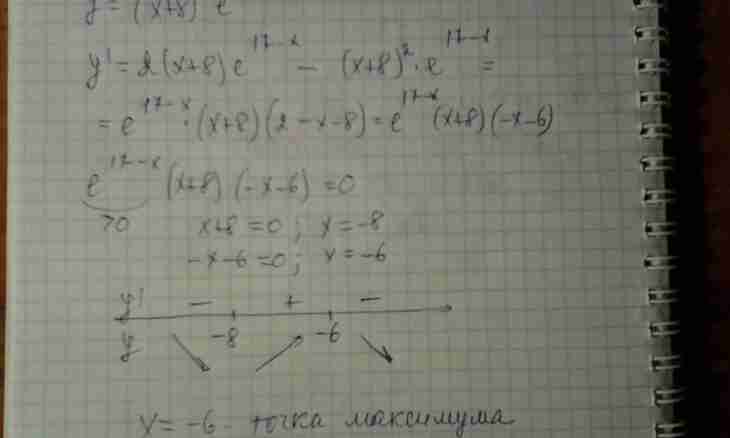Function maximum points along with points of a minimum are called extremum points. In these points the function changes the nature of behavior. Extrema are defined on limited numerical intervals and always are local.
Instruction
1. Process of finding of local extrema is called a research of function and is carried out by the analysis of the first and second derivative function. Before the research make sure that the set interval of values of an argument belongs to permissible values. For example, for the F=1/x function the value of an argument x =0 is unacceptable. Or for the Y=tg (x) function the argument cannot matter x =90 °.
2. Make sure that function Y is differentiated on all set piece. Find the first derivative Y'. It is obvious that function increases up to achievement of a point of a local maximum, and upon transition through a maximum the function becomes decreasing. The first derivative on the physical sense characterizes function change speed. While function increases, the speed of this process is size positive. Upon transition through a local maximum the function begins to decrease, and the speed of process of change of function becomes negative. Transition of speed of change of function through zero happens in a point of a local maximum.
3. Therefore, on the site of increase of function its first derivative is positive for all values of an argument on this interval. And vice versa — on the site of decrease of function the value of the first derivative is less than zero. The value of the first derivative is equal in a point of a local maximum to zero. It is obvious to find a local maximum of function, it is necessary to find a point x ₀ in which the first derivative of this function is equal to zero. At any value of an argument on the studied piece hkh ₀ - negative.
4. For location x ₀ solve the equation Y '=0. The value Y (x ₀) will be a local maximum if the second derivative of function in this point less than zero. Find the second derivative Y"", substitute in the received expression value of an argument x = x ₀ and compare result of calculations to zero.
5. For example, the Y= function - x²+x+1 on a piece from-1 to 1 has continuous derivative Y '=-2x+1. At x =1/2 derivative are equal to zero, and upon transition through this point the derivative changes the sign with "+" on "-". The second derivative of function Y" "=-2. Construct on points Y= function graph - x²+x+1 and check whether the point with an abscissa x =1/2 local maximum on the set piece of a numerical axis is.

